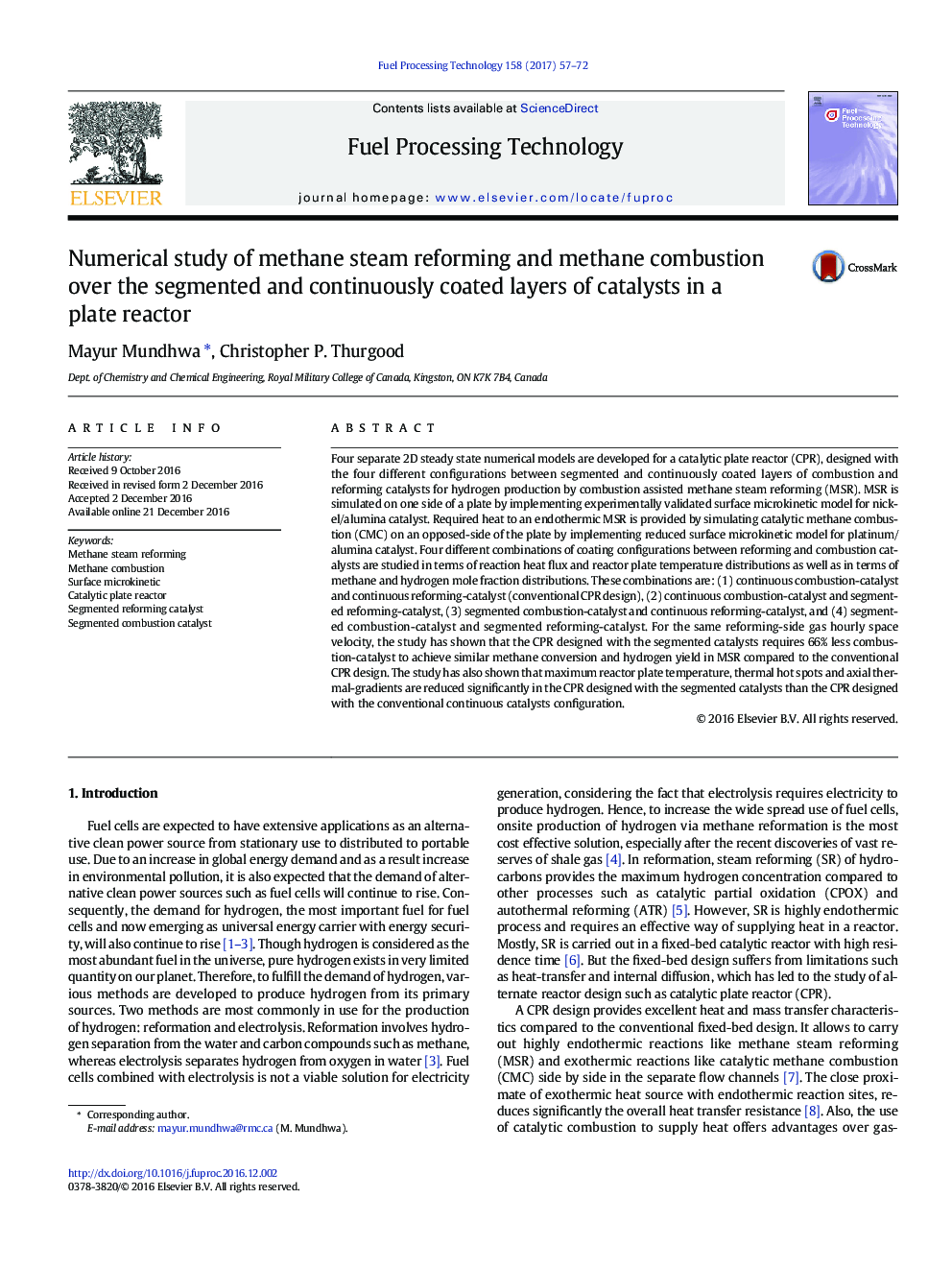| کد مقاله | کد نشریه | سال انتشار | مقاله انگلیسی | نسخه تمام متن |
|---|---|---|---|---|
| 4768924 | 1425388 | 2017 | 16 صفحه PDF | دانلود رایگان |
- Proposing segmented design for both reforming and combustion catalysts in a CPR
- 66% less combustion-catalyst is needed with segmented catalysts design.
- Axial thermal-gradients are reduced with the proposed segmented catalyst design.
- Maximum reactor temperature is reduced with the segmented catalysts design.
Four separate 2D steady state numerical models are developed for a catalytic plate reactor (CPR), designed with the four different configurations between segmented and continuously coated layers of combustion and reforming catalysts for hydrogen production by combustion assisted methane steam reforming (MSR). MSR is simulated on one side of a plate by implementing experimentally validated surface microkinetic model for nickel/alumina catalyst. Required heat to an endothermic MSR is provided by simulating catalytic methane combustion (CMC) on an opposed-side of the plate by implementing reduced surface microkinetic model for platinum/alumina catalyst. Four different combinations of coating configurations between reforming and combustion catalysts are studied in terms of reaction heat flux and reactor plate temperature distributions as well as in terms of methane and hydrogen mole fraction distributions. These combinations are: (1) continuous combustion-catalyst and continuous reforming-catalyst (conventional CPR design), (2) continuous combustion-catalyst and segmented reforming-catalyst, (3) segmented combustion-catalyst and continuous reforming-catalyst, and (4) segmented combustion-catalyst and segmented reforming-catalyst. For the same reforming-side gas hourly space velocity, the study has shown that the CPR designed with the segmented catalysts requires 66% less combustion-catalyst to achieve similar methane conversion and hydrogen yield in MSR compared to the conventional CPR design. The study has also shown that maximum reactor plate temperature, thermal hot spots and axial thermal-gradients are reduced significantly in the CPR designed with the segmented catalysts than the CPR designed with the conventional continuous catalysts configuration.
358
Journal: Fuel Processing Technology - Volume 158, April 2017, Pages 57-72
